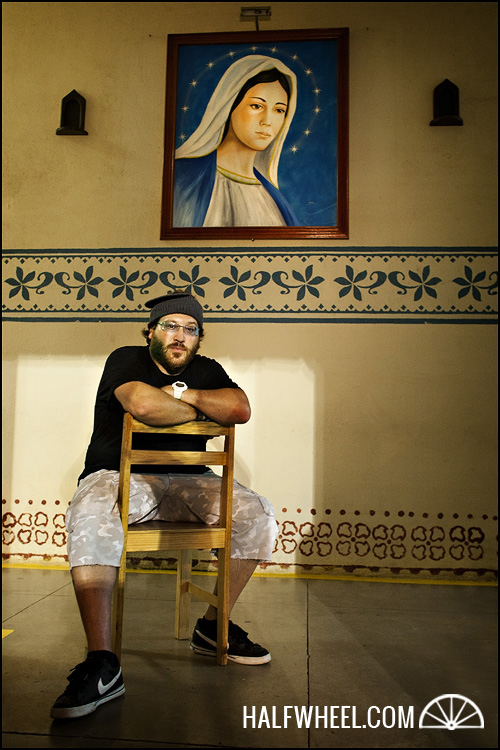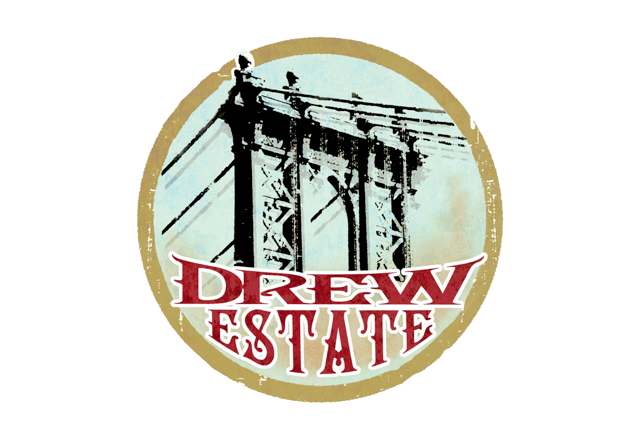Our final Icons of Cigars™ portrait from our trip to Cigar Safari in Nicaragua is Jonathan Drew of Drew Estate. As you may or may not recall, we had photographed Drew before, last year at the IPCPR show, but I was looking for something a bit different out of this trip.
It seems to me that J.D. is always on — always putting on a show, always being the person that people expect him to be. But spending a little bit of time with him in quiet at Cigar Safari and before that allowed me to realize that there are moments where he lets down is guard a bit, and becomes a little more of his true self. This portrait was taken on the bus ride from the airport to Estelí. I noticed that J.D. was hanging around with us in the back, and I asked him to lean on the seat backs in front of him, and look to his left (towards Charlie, who is sitting on my right). I told Charlie Minato to say something funny, J.D. laughed, and Bob’s your uncle, here is a portrait.

Why do I like it? Well, besides the compositional elements, which I go into detail about below, I just love the fact that this is such a different and a much more human side to Jonathan Drew than I have ever seen in photographs. A real smile, a relaxed body, just a person at peace at the moment the photo was taken. It is incredibly difficult to get a true expression out of anyone, much less J.D., and I appreciate the fact that he trusted me enough to photograph it.
For those of you that care about technical details: This photo was taken with a Canon 1DIII and a 24 f/1.4 lens photographed at f/2.0 at 400 ISO and 1/800 sec. The camera says that the focus point (his head) was exactly 1.59 meters away from the lens. The light was all natural, coming in from the windows all over the bus — the natural light is also partly what gives the photo its natural look.
_______________________________________________________________________
Now, something a bit different. This photo is a perfect example of a wonderful composition for multiple reasons, so I thought I would try to explain in a little detail. Every great photo that you see and think to yourself, “Wow, that is a good photo,” but most likely, you don’t know exactly why. Well, there are specific reasons that is the case. In fact, your brain is hardwired to find specific elements in photographs pleasing and you notice those elements, even if you don’t realize what they are.
So, lets take this portrait of J.D. as an example. The first thing I notice when seeing it (and when I shot it of course) was that it adheres to the rule of thirds, one of the basic principles of photography. At its basest level, Wikipedia says that the rule of thirds basically advises that “an image should be imagined as divided into nine equal parts by two equally-spaced horizontal lines and two equally-spaced vertical lines, and that important compositional elements should be placed along these lines or their intersections. Proponents of the technique claim that aligning a subject with these points creates more tension, energy and interest in the composition than simply centering the subject would.”
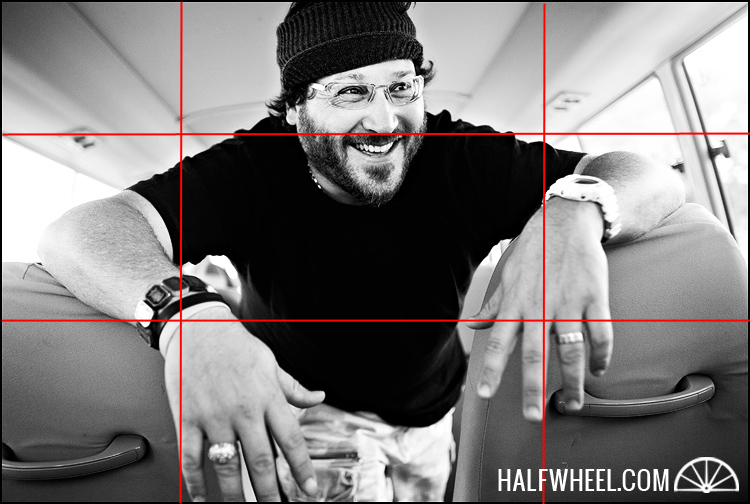
Here you can see I have put those lines showing you the division of the Rule of Thirds. As you can see, J.D.’s smile is almost directly over one of the lines, and his head is right in the middle of the top middle section and well away from the actual middle of the photograph. Putting his head where it is not only increases the tension and interest in photograph, it makes it possible to also include the second and third things below.
So, now that we have the rule of thirds down, the second thing I am going to show you that works in the photograph is that all of the elements in this portrait force your eyes to head straight to J.D.’s head, where the most important part of the photograph is, i.e. his expression.
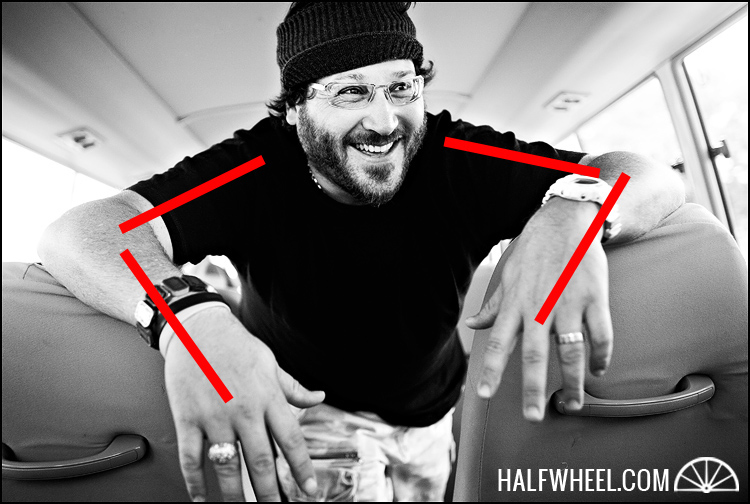
You can see that his hands and arms both form a rough circle that follows a path straight up to his head, on both sides of his body. Whether you know it or are aware of it or not, your mind instinctually follows that road to the exact point I want it to, at the top of the frame.
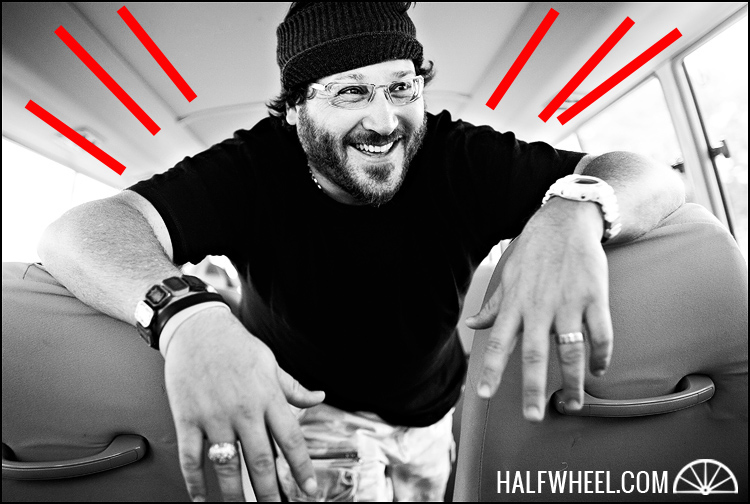
Not only that, but there are other elements in the bus itself that lead your eyes straight to J.D.’s head. The lines in the background behind J.D., i.e. the ceiling of the bus, all lead straight to the same place: his head.
There are other things that are of lesser importance that help out my cause in having you notice J.D.’s expression before you see anything else. First, the fact that his face is white and is in-between two elements of black (his hat on top and his shirt on bottom). I turned the photo into black and white to take advantage of just that fact, as the contrast in color was just not as evident. Second, the low depth of field blurs out the background considerably and the bokah on the 24. f/1.4 is wonderful, just forcing your mind to notice the area that is tack sharp. Third, the fact that I used black and white on the photo instead of color means that there is very little in the way of distracting elements in the background, since they all go some variation of gray. Sorry to bore you to tears with the explanations, but I thought this would be the perfect photo to explain a few things about what I look for when I take a portrait.
Hope you enjoyed! One last photo, no details.
